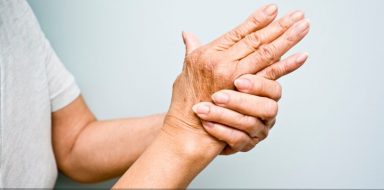Arthritis in Fingers
Arthritis affects over 350 million people worldwide each year and can attack any joint in the body. However, one of the most common areas for arthritis to strike is in the hands, wrists, and fingers.
Though wrist and hand arthritis are common, this article has all the information you need about finger arthritis, including its causes, symptoms, treatment, and prevention.
Finger Arthritis Causes
Like all cases of arthritis, finger arthritis is caused by inflammation in the joints. Many cases of finger arthritis are rheumatoid arthritis, meaning that they are caused by an overfiring immune system that attacks the patient’s own joints.
However, there are other kinds of arthritis. Osteoarthritis is caused by long-term mechanical wear-and-tear of the joints, and psoriatic arthritis is an inflammatory response triggered by psoriasis.
Each of these modes of arthritis can affect the fingers. Osteoarthritis may be more common in the fingers of people who undergo a lot of repetitive motion, like musicians or people who work with their hands or on a computer.
Finger Arthritis Symptoms
The most obvious symptom of finger arthritis is pain and swelling in the fingers, especially in the joints. Other symptoms of finger arthritis can include:
- Noise: Arthritic joints can often pop and crack throughout the day.
- Warmth: Inflammation can be accompanied by a noticeable difference in temperature, almost like a fever in the fingers.
- Bumps and irregularities: Arthritis can cause nodules to form beneath the skin and may even cause joints to tighten or bend.
Treatments Methods to Relieve Symptoms
Finger arthritis is easily diagnosed because it is common. Most treatments for finger arthritis will match treatments for arthritis in general. These can include medications like:
- Topical creams: These usually contain ingredients like capsaicin or diclofenac, which are applied over the skin around the joint and can relieve pain and soothe inflammation.
- Over-the-counter pain relievers: Acetaminophen (Tylenol), ibuprofen (Advil, Motrin) or naproxen sodium (Aleve) are common choices. Always take these in accordance with the guidance on the label.
- Prescription pain relievers: Celecoxib (Celebrex) or tramadol (Conzip, Ultram). These are unlikely to be prescribed for mild symptoms.
Many patients also benefit from exercises to treat their finger arthritis. Some exercises that may help include:
- Make a fist: Slowly and deliberately form a fist, then release it until the fingers are straight again. This is a great way to get all your fingers and your whole hand moving at once, and it’s easy to do literally anywhere.
- Finger bends: Slowly bend each finger at each joint, holding it in each position for a few seconds. This is a great way to focus on an individual finger that’s bothering you.
- Thumb bends: Gently touch your thumb to the base of your pinkie, or as close as you can comfortably reach.
- Finger lifts: Putting your hand flat on a table, gently lift each finger individually.
There are many more arthritis exercises than just these, so you can always talk to your doctor if you are unsure of what to do.
This article will explore symptoms of osteoarthritis, looking at the top signs. Read on to learn more here.
In all cases, do not push yourself to the point of pain during exercises, as this will only make matters worse. Only do what is safe and painless, and recommended by your doctor.
Prevention Techniques
Like all forms of arthritis, finger arthritis is a degenerative disorder. This means that once it has begun, it is difficult and often impossible to reverse it. Similarly, it can be difficult to prevent. However, there are some strategies that may help, though nothing is guaranteed.
Since finger arthritis often occurs in highly used joints in the fingers, it may be possible to reduce symptoms of finger arthritis by avoiding repetitive actions. This can mean using assistive technology to avoid using a mouse or keyboard or changing technique when playing a musical instrument.
If you feel that your arthritis is aggravated by your workplace, you may need to consider adjusting your workspace or trying out some ergonomic computer equipment.
Additionally, healthy lifestyle choices like maintaining a healthy weight, exercising, and avoiding drinking and smoking can also help. Your overall physical health is the first line of defense in the treatment and prevention of arthritis.
Coping with Finger Arthritis
It can be very difficult having a degenerative illness, because it feels like you’ll never get better. And while it is true that arthritis is generally not completely curable, many people learn to manage their symptoms and live perfectly happy and productive lives.
Here are some tips for coping with arthritis:
- Seek treatment: It can be easy to want to go it alone, but a doctor can help connect you with resources and prescribe you with medication that could be the difference between surviving and thriving.
- Seek support from others: Ask for help when you need it from family members and friends, and if your condition is having a strong effect on your mental health, you may consider seeking out a chronic pain support group in your area.
With support from family, friends, and medical providers, you can live your life to the fullest, and not let finger arthritis control your world.







